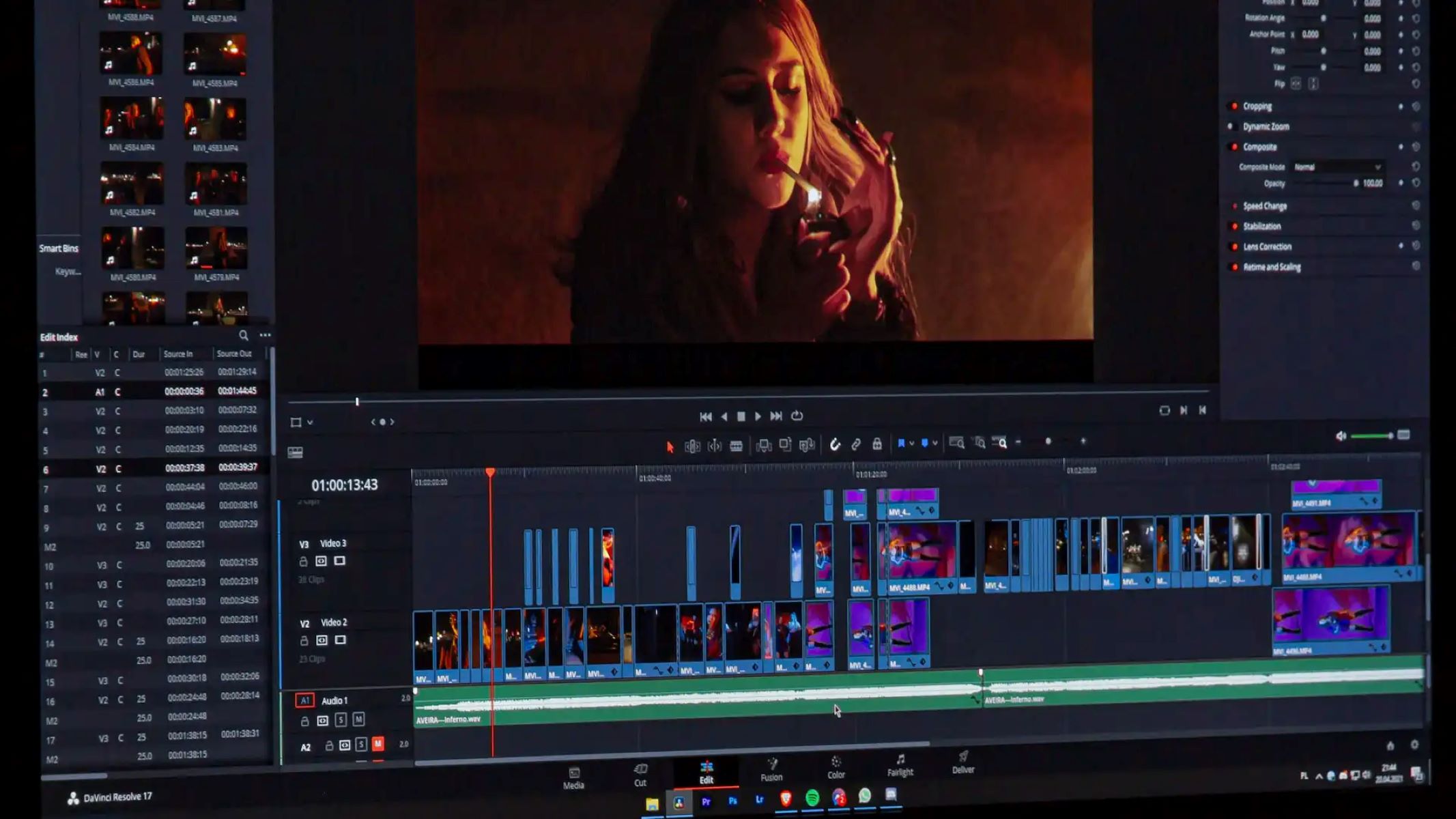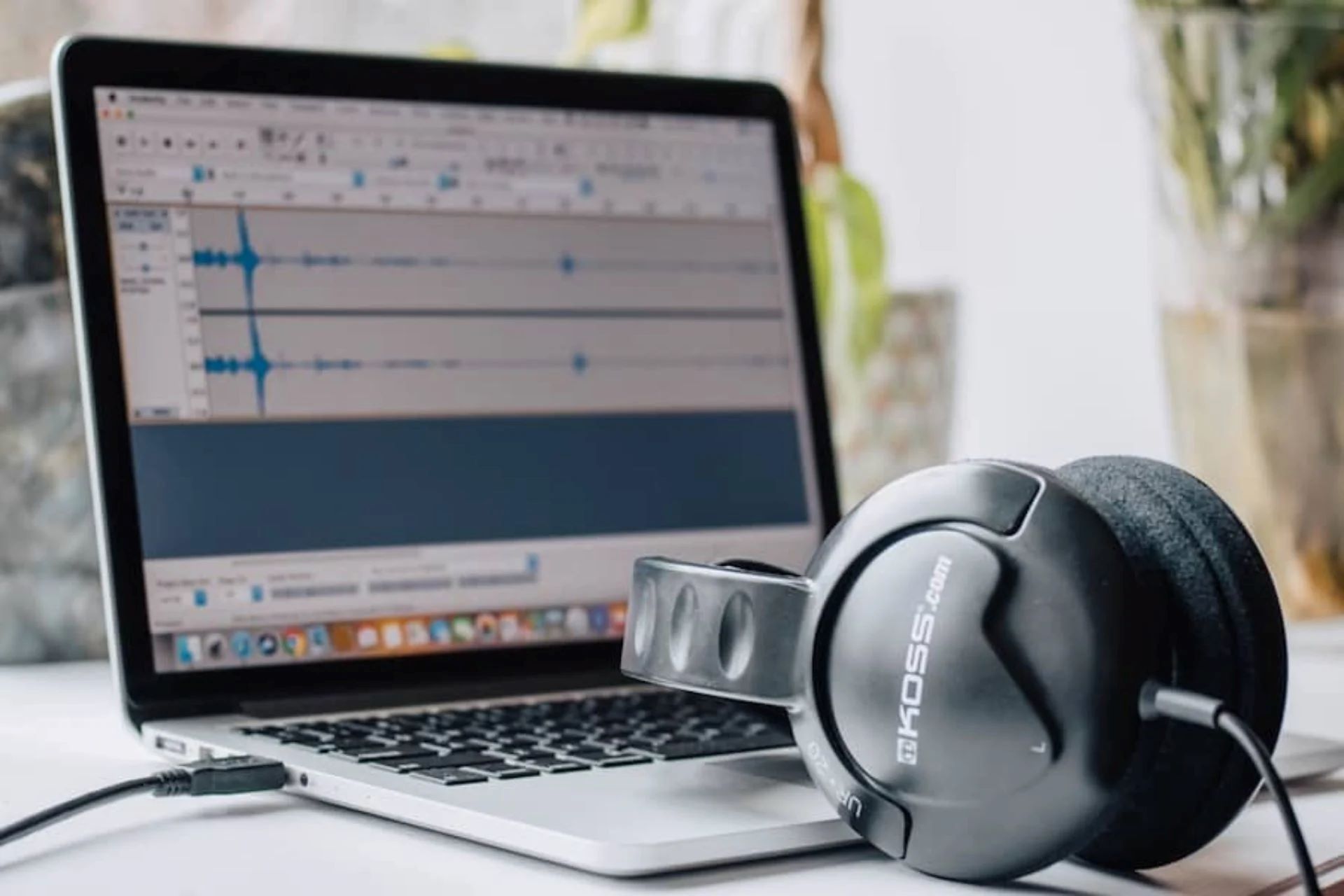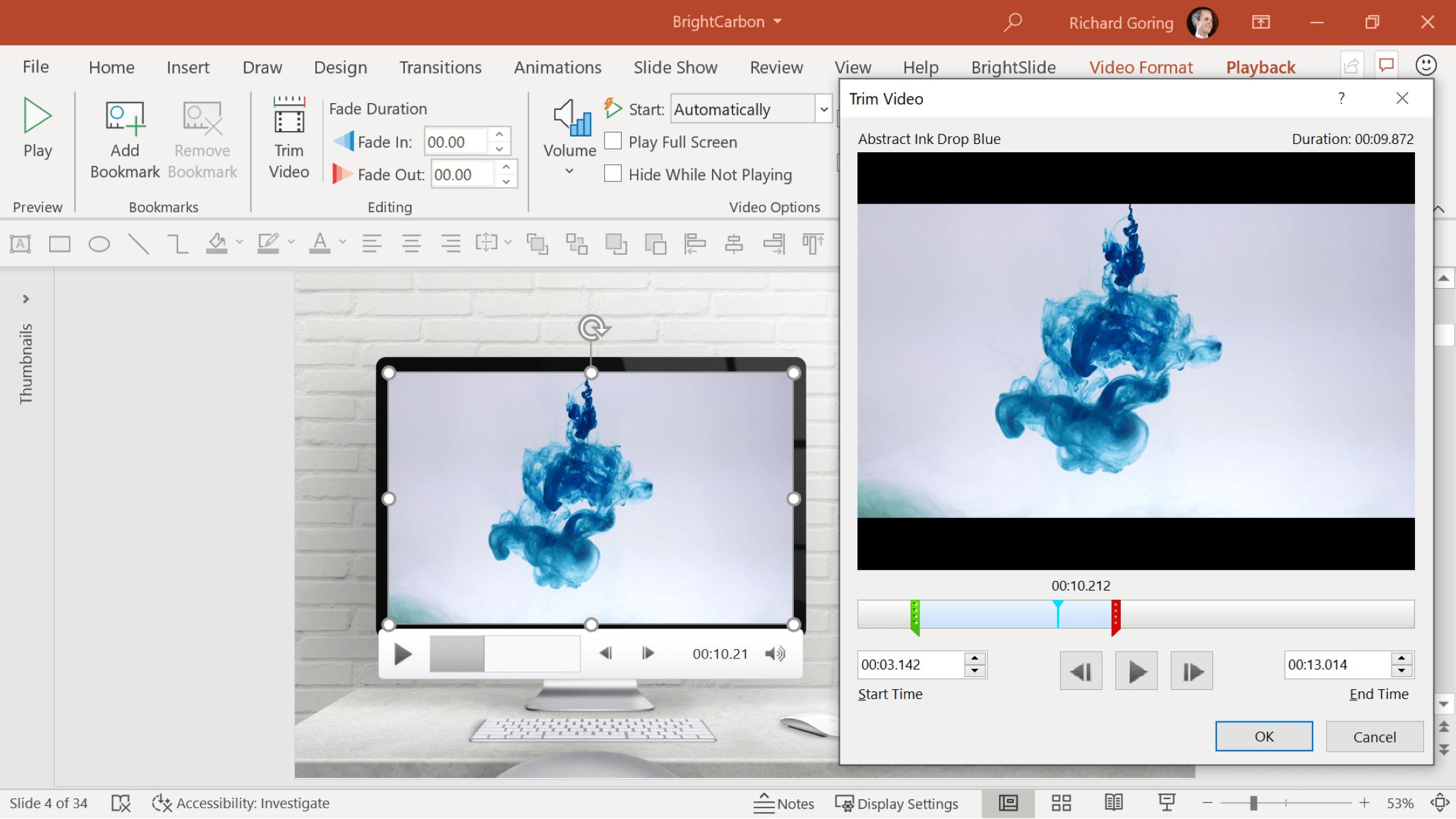Home>Production & Technology>Background Music>When To Use Background Music In Videos


Background Music
When To Use Background Music In Videos
Modified: January 22, 2024
Discover when and how to effectively use background music in videos to enhance the mood and captivate your audience. Learn more about the impact and benefits of incorporating background music.
(Many of the links in this article redirect to a specific reviewed product. Your purchase of these products through affiliate links helps to generate commission for AudioLover.com, at no extra cost. Learn more)
Table of Contents
- Introduction
- Purpose of Background Music in Videos
- Creating an Emotional Connection
- Enhancing the Atmosphere or Tone
- Establishing Brand Identity
- Increasing Engagement and Retention
- Types of Videos That Benefit from Background Music
- Tutorial and How-To Videos
- Product Demonstrations and Reviews
- Travel and Adventure Videos
- Vlogs and Personal Videos
- Storytelling and Narrative Videos
- Documentary Videos
- When to Avoid Background Music in Videos
- Videos with Dialogue or Voiceovers
- Videos with Detailed Sound Design
- Minimalist or Silent Videos
- Conclusion
Introduction
Background music plays a crucial role in creating a captivating and immersive experience for video viewers. It has the power to enhance the emotional impact and reinforce the message being conveyed. Whether you’re creating a tutorial, promotional video, documentary, or vlog, strategically adding background music can take your videos to the next level.
The purpose of background music in videos extends beyond mere entertainment. It serves as a tool to connect with the audience on a deeper level, establish the tone and atmosphere, and even reinforce brand identity. By carefully selecting and using background music, you can effectively convey your message and leave a lasting impression on your viewers.
In this article, we will explore the various reasons why background music is essential in videos. We will discuss how it helps to create an emotional connection, enhance the atmosphere or tone, and establish brand identity. Additionally, we will provide insights into the types of videos that benefit the most from background music and highlight situations where it may be better to avoid using it.
So, whether you’re a content creator, marketer, or business owner looking to make an impact with your videos, understanding when and how to utilize background music is key. Let’s delve into the details and discover how background music can transform your videos into memorable and engaging experiences.
Purpose of Background Music in Videos
Background music serves multiple purposes when incorporated into videos. It adds depth, emotion, and atmosphere, complementing the visuals and enhancing the overall viewing experience. Let’s explore some key purposes of background music in videos:
1. Creating an Emotional Connection: Music has the power to evoke emotions and create a strong bond between the viewer and the video content. Whether it’s excitement, joy, tension, or sadness, the right background music can amplify the emotional impact of the visuals, helping to captivate and engage the audience.
2. Enhancing the Atmosphere or Tone: Background music sets the mood and tone of the video, shaping how viewers perceive and interpret the content. By carefully selecting music that aligns with the message and intended atmosphere, you can guide the viewer’s emotional response and create a more immersive experience.
3. Establishing Brand Identity: Consistently using specific styles or genres of music in your videos can help establish a recognizable brand identity. The right music can elicit familiarity and association, strengthening your brand’s presence in the minds of viewers. This can be especially beneficial for businesses, content creators, and marketers who want to reinforce their brand image.
4. Increasing Engagement and Retention: Well-chosen background music helps to grab and maintain the viewer’s attention. It can make your videos more enjoyable and entertaining, keeping viewers engaged throughout. Studies have shown that videos with appropriate audio elements, including background music, have higher retention rates, ensuring that your message resonates with the audience.
5. Connecting with Different Types of Videos: Background music is not limited to a specific genre or type of video. It can enhance various genres, including tutorials, product demonstrations, vlogs, storytelling, and even documentary videos. By understanding the purpose and context of your video, you can select music that aligns with your content, creating a seamless and impactful viewing experience.
In summary, the purpose of background music in videos is to create an emotional connection, enhance the atmosphere or tone, establish brand identity, increase engagement and retention, and connect with different types of videos. By leveraging the power of background music effectively, you can elevate your video content to new heights, leaving a lasting impression on your viewers.
Creating an Emotional Connection
One of the primary purposes of background music in videos is to create an emotional connection with the audience. Music can evoke powerful emotions and enhance the overall impact of the visuals, making the viewer more receptive to the message being conveyed. Let’s explore how background music helps in creating an emotional connection:
1. Setting the Mood: Different genres of music have distinct emotional qualities. By selecting the right genre or style of background music, you can set the mood and create the desired emotional atmosphere for your video. For example, gentle and soothing music can evoke a sense of calmness and relaxation, while energetic and upbeat music can generate excitement and enthusiasm.
2. Enhancing the Storytelling: Background music can play a vital role in enhancing the storytelling aspect of your video. It can underscore important moments, heighten tension, or accentuate poignant scenes. By carefully syncing the music with the visuals, you can create a more immersive and emotionally resonant storytelling experience for the viewer.
3. Tapping into Nostalgia: Certain types of music have the power to evoke nostalgia and bring back memories. By incorporating familiar or nostalgic tunes, you can connect with the viewer on a personal level, triggering their emotions and making the message more relatable. This can be particularly effective when showcasing past events or evoking a sense of sentimentality.
4. Conveying Emotions without Words: In some cases, background music becomes especially crucial when there is limited or no dialogue in the video. It serves as a vehicle for expressing emotions and capturing the viewer’s attention. The right music can effectively convey the intended emotions, such as happiness, sadness, fear, or excitement, even without the use of spoken words.
5. Building Empathy: Background music can help build empathy and foster a sense of connection between the viewer and the content. When the music aligns with the emotions depicted in the video, it allows the viewer to empathize with the characters or situations portrayed. This emotional connection enhances the viewer’s engagement and makes them more invested in the content.
By using background music strategically, you can create a deeper emotional impact in your videos. Whether it is through setting the mood, enhancing storytelling, tapping into nostalgia, conveying emotions, or building empathy, background music plays a vital role in connecting with the audience on an emotional level. When viewers are emotionally engaged, they are more likely to remember and resonate with your video long after watching it.
Enhancing the Atmosphere or Tone
Another important purpose of background music in videos is to enhance the overall atmosphere or tone of the content. The right music can help create a specific ambiance that aligns with the message and visuals, elevating the viewer’s experience. Let’s explore how background music enhances the atmosphere or tone of videos:
1. Establishing the Mood: Background music sets the mood and creates a specific ambiance for your video. Whether you want to create a sense of excitement, suspense, romance, or relaxation, the choice of music is crucial. By selecting music that matches the desired mood, you can create a more immersive and impactful viewing experience.
2. Adding Depth and Dimension: Music has the power to add depth and dimension to your video, making it feel more vibrant and dynamic. By incorporating carefully chosen background music, you can fill the auditory space and create a more enriched sensory experience for the viewer.
3. Enhancing Visuals and Transitions: Background music can enhance the impact of visual elements and smooth out transitions in your video. It helps to create a cohesive and seamless flow, guiding the viewer through different scenes and maintaining their interest. Well-timed musical cues can make transitions more seamless and add an extra layer of polish to your content.
4. Communicating Subtle Messages: Background music can communicate subtle messages that might not be conveyed through visuals or dialogue alone. The choice of music can imply certain emotions, attitudes, or cultural references, allowing you to convey more nuanced meanings or subtext to the viewer.
5. Reflecting the Brand or Style: The tone and style of the background music can also reflect the brand identity or the overall style of the video content. For example, a corporate video may use instrumental music that conveys professionalism and reliability, while a fashion video may incorporate upbeat and trendy music to match the industry’s aesthetics.
By leveraging background music to enhance the atmosphere or tone of your videos, you can create a more immersive and engaging experience for the viewer. The right music can elevate the visual elements, smoothen transitions, communicate subtle messages, and reflect the overall brand identity or style. Careful consideration of the tone and mood you want to convey will allow you to select the perfect background music that complements your video content.
Establishing Brand Identity
Background music in videos plays a significant role in establishing brand identity. By utilizing consistent and representative music styles or themes, you can create a recognizable audio brand that aligns with your overall brand image. Let’s explore how background music helps in establishing brand identity:
1. Creating Familiarity: Using consistent background music across your video content helps create familiarity with your brand. When viewers hear the same music in different videos, it becomes associated with your brand and establishes a sense of recognition. This familiarity builds trust and strengthens the overall brand identity.
2. Conveying Brand Values: The choice of background music can reflect and reinforce your brand values. For example, if your brand aims to convey a sense of innovation and forward-thinking, incorporating modern and contemporary music can help reinforce that message. Similarly, if your brand focuses on eco-friendly or sustainable practices, using natural or organic sounds in the background music can align with those values.
3. Creating Emotional Connection: When viewers consistently hear specific background music in your videos, they develop an emotional connection with your brand. The right music can evoke specific emotions that resonate with your target audience, helping to strengthen their bond with your brand and increasing their loyalty.
4. Reflecting Brand Personality: Background music can reflect the personality of your brand. Whether your brand is energetic, sophisticated, whimsical, or adventurous, the choice of music can mirror and reinforce that personality. This can help differentiate your brand and make it more memorable in the minds of viewers.
5. Consistency across Platforms: By using consistent background music across different videos and platforms, such as social media channels, website videos, and advertisements, you create a cohesive brand experience for your audience. This consistent audio branding conveys professionalism and attention to detail, reinforcing your brand identity and making a lasting impression.
Establishing brand identity through background music is essential for creating a cohesive and recognizable audio brand. By creating familiarity, conveying brand values, creating an emotional connection, reflecting brand personality, and maintaining consistency across platforms, you can use background music strategically to make your brand stand out and leave a lasting impression on viewers.
Increasing Engagement and Retention
Background music plays a crucial role in increasing viewer engagement and retention in videos. When used effectively, it can capture the viewer’s attention, enhance the overall viewing experience, and leave a lasting impression. Let’s explore how background music helps in increasing engagement and retention:
1. Grabbing Attention: Well-selected background music can help grab the viewer’s attention right from the start of the video. A catchy or intriguing piece of music can pique the viewer’s curiosity and entice them to continue watching. By capturing their attention early on, you increase the chances of keeping them engaged throughout the entire video.
2. Setting the Pace: Background music can set the pace and rhythm of your videos, influencing the viewer’s perception of the content. Fast-tempo music can create a sense of urgency and excitement, while slower and soothing music can generate a calming effect. By aligning the music with the desired pace of your video, you can maintain the viewer’s interest and prevent them from losing focus.
3. Adding Entertainment Value: Background music adds an element of entertainment to your videos, making them more enjoyable and engaging for the viewer. When the music complements the visuals and aligns with the overall theme and mood, it enhances the overall viewing experience and encourages the viewer to stay engaged.
4. Evoking Emotional Responses: Emotional responses can deepen viewer engagement and foster a connection with your content. Background music has the power to evoke specific emotions, whether it’s excitement, happiness, nostalgia, or even suspense. By strategically using music to elicit emotional responses in your videos, you create a more impactful and memorable experience for the viewer.
5. Enhancing Memory and Recall: Background music can significantly enhance the viewer’s memory and recall of your videos. Studies have shown that music has a powerful effect on memory retrieval. By associating specific music with your video content, you increase the chances of viewers remembering and recalling your videos even after they have finished watching.
By leveraging background music to increase engagement and retention, you can ensure that your videos leave a lasting impact on the viewer. By grabbing attention, setting the pace, adding entertainment value, evoking emotional responses, and enhancing memory and recall, background music plays a vital role in creating an engaging and memorable viewing experience.
Types of Videos That Benefit from Background Music
Background music can enhance various types of videos, adding depth, emotion, and engagement to the content. Let’s explore some of the types of videos that particularly benefit from the use of background music:
1. Tutorial and How-To Videos: Tutorial and how-to videos often involve step-by-step instructions and demonstrations. Background music can help create a pleasant and engaging atmosphere while providing a sense of progression and structure to the content. It can also inject energy and excitement, making the learning experience more enjoyable for the viewer.
2. Product Demonstrations and Reviews: Background music can elevate product demonstration and review videos by adding an element of professionalism and excitement. The right music can create a positive and engaging mood, making the viewer more interested in the product being showcased. It can also highlight key features, benefits, and use-cases, enhancing the overall viewing experience.
3. Travel and Adventure Videos: Travel and adventure videos can be visually stunning, and background music can amplify the sense of wonder and discovery. By using appropriate music, such as uplifting or atmospheric tunes, you can transport the viewer into the destination and enhance the overall immersive experience. The music adds to the excitement and emotions evoked by the visuals, making the viewer feel more connected to the journey.
4. Vlogs and Personal Videos: Vlogs and personal videos often revolve around the creator’s experiences and storytelling. Background music can help set the tone, mood, and overall vibe of the video. By selecting music that aligns with the theme or atmosphere of the vlog, you can enhance the storytelling and create a more captivating and immersive experience for the viewer.
5. Storytelling and Narrative Videos: Storytelling and narrative videos, such as short films or brand stories, rely heavily on creating an emotional connection with the audience. Background music plays a crucial role in setting the tone, conveying emotions, and enhancing the narrative arcs. It helps create tension, excitement, or empathy, making the storytelling more powerful and engaging.
6. Documentary Videos: Documentaries often aim to educate, inform, and emotionally connect with the audience. Background music in documentary videos can help create a specific atmosphere, add depth to the narrative, and evoke emotions. The right selection of music can enhance the storytelling and engage the viewer on a deeper level.
While these are just a few examples, background music can enrich almost any type of video content. Whether it’s tutorial videos, product demonstrations, travel vlogs, personal videos, storytelling narratives, or documentaries, carefully selecting and incorporating background music can elevate the viewer’s experience and make your videos more memorable and impactful.
Tutorial and How-To Videos
Tutorial and how-to videos are designed to educate and guide viewers through a specific process or skill. Background music plays a crucial role in enhancing the overall viewing experience and keeping viewers engaged throughout the tutorial. Here’s how background music benefits tutorial and how-to videos:
1. Creating a Pleasant Atmosphere: Tutorial and how-to videos can sometimes be perceived as dry or monotonous. Background music helps to create a pleasant atmosphere, making the learning process more enjoyable and engaging for the viewer. The right music can add energy and excitement, capturing and maintaining the viewer’s attention from start to finish.
2. Providing Structure and Progression: Background music can provide structure and a sense of progression in tutorial videos. By using music with a steady tempo or rhythm, you can help pace the tutorial and guide viewers through each step. This gives the video a cohesive flow and makes it easier for viewers to follow along.
3. Evoking the Right Emotions: Background music sets the tone and evokes the right emotions in tutorial videos. Whether it’s a relaxing and peaceful ambiance for a mindfulness tutorial or motivational and upbeat music for a workout tutorial, the music enhances the overall experience and helps to create the desired atmosphere.
4. Highlighting Key Points: Background music can be used strategically to highlight important points or emphasize specific moments in tutorial videos. For example, a swell of music can be used to draw attention to a crucial step or a transition. This helps to keep viewers engaged and ensures that they don’t miss important information.
5. Adding a Professional Touch: Well-chosen background music adds a professional touch to tutorial videos. It creates a more polished and refined presentation, giving a positive impression of the content creator or brand. This can help establish credibility and trust in the instructional content being shared.
6. Improving Information Retention: Studies have shown that incorporating background music in instructional videos can improve information retention. The right music can help create a subconscious connection between the content being taught and the viewer’s memory. As a result, the viewer is more likely to remember and recall the information in the long run.
By leveraging background music effectively, tutorial and how-to videos become more engaging, enjoyable, and effective in teaching viewers new skills or knowledge. The right music creates a pleasant atmosphere, provides structure and progression, evokes the desired emotions, highlights important points, adds professionalism, and enhances information retention. These benefits ultimately lead to a more successful and impactful tutorial video.
Product Demonstrations and Reviews
Product demonstrations and reviews are vital for showcasing the features and benefits of a product to potential customers. Background music plays a crucial role in enhancing the overall impact of these videos and capturing the viewer’s attention. Here’s how background music benefits product demonstration and review videos:
1. Setting the Tone: Background music helps set the tone of product demonstration and review videos. Whether it’s a luxurious and sophisticated ambiance for a high-end product or an upbeat and energetic vibe for a tech gadget, the music creates an atmosphere that complements the product being showcased. It enhances the overall perception and helps create an emotional connection with the viewer.
2. Adding Energy and Excitement: Background music adds energy and excitement to product demonstration and review videos. It can grab the viewer’s attention right from the start, making the video more engaging and captivating. Upbeat and catchy music can create a positive vibe and heighten the viewer’s interest in the product, making them more likely to consider purchasing it.
3. Highlighting Key Features: Background music can be used strategically to highlight specific product features or benefits. By syncing the music with the visuals or key moments, you can draw the viewer’s attention to the most important aspects of the product. This helps in effectively conveying the product’s value and capabilities.
4. Creating an Emotional Connection: Background music evokes emotions and helps to create an emotional connection between the viewer and the product. By selecting music that aligns with the desired emotional response, such as happiness, excitement, or relaxation, you can enhance the viewer’s overall experience and make the product more memorable.
5. Increasing Viewer Engagement: Well-chosen background music increases viewer engagement in product demonstration and review videos. It adds entertainment value and makes the video more enjoyable to watch. When viewers are engaged, they are more likely to stay invested in the content and ultimately retain the information being presented.
6. Strengthening Brand Perception: Consistently using background music that aligns with your brand image helps create a stronger brand perception. The music becomes associated with your products and reinforces your brand identity. When viewers encounter similar music in other videos or marketing materials, it enhances brand recognition and increases the viewer’s trust in your products and reviews.
Background music significantly enhances the impact and engagement of product demonstration and review videos. By setting the tone, adding energy, highlighting key features, creating an emotional connection, increasing viewer engagement, and strengthening brand perception, background music plays a crucial role in making these videos more effective and influential.
Travel and Adventure Videos
Travel and adventure videos are meant to transport viewers to new destinations and immerse them in exciting experiences. Background music plays a crucial role in enhancing the visual storytelling and evoking the desired emotions in these videos. Here’s how background music benefits travel and adventure videos:
1. Creating a Sense of Atmosphere: Background music helps set the mood and create a sense of atmosphere in travel and adventure videos. Whether it’s serene and relaxing music for tranquil destinations or energetic and upbeat tunes for thrilling adventures, the right music enhances the viewer’s sensory experience, making them feel more connected to the destination.
2. Amplifying the Sense of Wonder: Travel and adventure videos evoke a sense of wonder and curiosity in viewers. Background music complements the visuals by adding an emotional layer, amplifying the beauty and awe of the places being showcased. The right music can enhance the viewer’s emotional response and make them feel as if they are a part of the journey.
3. Enhancing Transitions and Montages: Travel videos often include transitions and montages of different locations or activities. Background music helps smoothen these transitions and adds cohesiveness to the overall video. By using music that suits each specific scene or location, you can create a seamless flow and make the transitions more captivating for the viewer.
4. Reflecting the Cultural Identity: Background music can reflect the cultural identity of the destinations featured in travel videos. By incorporating local or indigenous music, you can create an authentic and immersive experience for the viewer. This not only enhances the viewer’s understanding of the location but also respects and appreciates the local culture.
5. Eliciting Emotions and Connections: Background music evokes emotions and helps viewers connect emotionally with the destinations showcased in travel videos. Music has the power to create nostalgia, excitement, or a sense of tranquility, enhancing the viewer’s emotional response and making the travel experience feel more personal and relatable.
6. Reflecting the Pace and Energy: Travel and adventure videos often have varying paces and levels of energy. Background music can reflect and enhance the pace and energy of the video, whether it’s a slow and contemplative piece for a calm beach scene or an upbeat and lively track for action-packed adventures. The music adds an extra layer of dynamism to the visuals, keeping the viewer engaged and entertained.
Background music plays a vital role in transforming travel and adventure videos into immersive and captivating experiences. By creating a sense of atmosphere, amplifying the sense of wonder, enhancing transitions and montages, reflecting cultural identity, eliciting emotions and connections, and reflecting the pace and energy, background music adds depth and emotion to travel videos, allowing viewers to embark on virtual journeys and embrace the beauty of various destinations.
Vlogs and Personal Videos
Vlogs and personal videos provide a glimpse into the lives and experiences of content creators. Background music plays a significant role in enhancing the storytelling, setting the mood, and creating a connection with the viewer. Here’s how background music benefits vlogs and personal videos:
1. Setting the Tone and Atmosphere: Background music helps set the tone and atmosphere of vlogs and personal videos. Whether it’s a relaxing and contemplative tune for a day-in-the-life vlog or an upbeat and energetic track for travel adventures, the music adds an extra layer of depth, setting the desired mood and creating a captivating ambiance.
2. Enhancing Emotional Impact: Background music adds emotional depth to personal videos, helping to enhance the storytelling and evoke specific emotions in the viewer. The right music can intensify the joy of happy moments, the nostalgia of past memories, or the sadness of bittersweet experiences. This emotional connection creates a more immersive and relatable experience for the viewer.
3. Creating a Seamless Flow: Background music helps create a seamless flow in vlogs and personal videos, especially during transitions between different scenes or activities. Smoothly blending the music can help create a cohesive narrative and maintain the viewer’s interest throughout the video. Music acts as a bridge, making the transitions feel natural and enjoyable.
4. Highlighting Key Moments: Background music can be used strategically to emphasize significant moments or highlights in vlogs and personal videos. Whether it’s a moment of celebration, an exciting activity, or a meaningful interaction, music can amplify the impact of these moments, making them more memorable for the viewer.
5. Reflecting Personal Style: The choice of background music in vlogs and personal videos can reflect the content creator’s personal style and preferences. By selecting music that resonates with their personality and tastes, content creators can establish their unique brand and identity. This can help them connect with their target audience and foster a loyal following.
6. Adding Entertainment Value: Vlogs and personal videos are not just about sharing information, but also about entertaining and engaging the viewer. Background music adds entertainment value by making the videos more dynamic and enjoyable to watch. The right music can energize the content, capture the viewer’s attention, and make the overall experience more pleasurable.
Vlogs and personal videos are made more compelling and immersive with the addition of background music. By setting the tone and atmosphere, enhancing emotional impact, creating a seamless flow, highlighting key moments, reflecting personal style, and adding entertainment value, background music elevates the storytelling and creates a more enjoyable and relatable experience for viewers of vlogs and personal videos.
Storytelling and Narrative Videos
Storytelling and narrative videos aim to engage viewers through compelling narratives and captivating storytelling techniques. Background music plays a crucial role in enhancing the emotional impact, setting the tone, and immersing viewers in the story being told. Here’s how background music benefits storytelling and narrative videos:
1. Setting the Tone and Mood: Background music helps to set the tone and mood of storytelling and narrative videos, establishing the overall atmosphere for the viewer. Whether it’s a suspenseful track for a thrilling plot or a melancholic melody for a poignant moment, the music enhances the emotional journey and creates a deeper connection with the characters and their experiences.
2. Enhancing Emotional Engagement: Background music intensifies emotional engagement in storytelling videos. It has the power to evoke specific emotions in viewers, such as joy, sorrow, excitement, or anticipation, enhancing the overall impact of the narrative. This emotional connection enables the viewer to become fully immersed in the story, empathizing with the characters and their struggles.
3. Creating Narrative Arcs: Background music can be used strategically to create narrative arcs, emphasizing key plot points and moments of climax in the story. By incorporating music that builds tension or excitement, the viewer’s anticipation is heightened, making the resolution or climax more satisfying. This technique adds depth and structure to the storytelling, making it more impactful.
4. Evoking Time and Place: Background music helps to evoke a sense of time and place in storytelling and narrative videos. By selecting music that aligns with the setting or time period of the story, you can transport viewers to a specific location or era, enhancing the authenticity and immersiveness of the narrative. The right music enhances the visual storytelling elements, making the story come alive.
5. Reinforcing Themes and Symbolism: Background music can reinforce themes and symbolism present in the storytelling video. By using music that reflects the underlying themes or motifs, the viewer’s understanding and interpretation of the story are deepened. This technique adds layers of meaning and amplifies the impact of the narrative message.
6. Engaging and Retaining Attention: Background music plays a critical role in engaging and retaining viewer attention in storytelling and narrative videos. It adds an extra layer of interest and excitement, compelling the viewer to stay engaged and follow the story closely. When viewers are emotionally invested in the story, they are more likely to remember and recall it even after watching.
Background music enhances the storytelling experience in narrative videos by setting the tone and mood, enhancing emotional engagement, creating narrative arcs, evoking time and place, reinforcing themes and symbolism, and engaging and retaining viewer attention. By carefully selecting and incorporating background music, creators can deliver powerful and impactful narratives that leave a lasting impression on the audience.
Documentary Videos
Documentary videos aim to inform, educate, and engage viewers by exploring real-life subjects and presenting facts, interviews, and narratives. Background music plays a crucial role in enhancing the storytelling, creating emotional connections, and setting the mood in documentary videos. Here’s how background music benefits documentary videos:
1. Enhancing the Narrative: Background music adds depth and emotion to the narrative in documentary videos. It can underscore important moments, highlight key information, or create transitions between different segments of the documentary. By complementing the visuals and the storytelling, the music enhances the viewer’s understanding and engagement.
2. Eliciting Emotional Responses: Background music evokes emotional responses in viewers, allowing them to connect on a deeper level with the subjects and content presented in the documentary. Whether it’s empathy, sadness, awe, or inspiration, the right music can amplify the emotional impact of the footage, making the documentary more memorable and impactful.
3. Establishing the Tone and Atmosphere: Background music sets the tone and creates the desired atmosphere in documentary videos. Whether it’s conveying seriousness, urgency, mystery, or hope, the music chosen reflects the overall theme and intention of the documentary. The right music helps guide the viewer’s emotional journey through the content.
4. Creating Continuity: Background music helps create continuity and cohesion in documentary videos that may involve various scenes or interview segments. By using consistent musical motifs or themes, the music acts as a thread that ties different elements together, creating a seamless and immersive viewing experience.
5. Fostering Engagement and Retention: Well-chosen background music fosters viewer engagement and retention in documentary videos. It adds an extra layer of interest, capturing and maintaining the viewer’s attention throughout the documentary. When viewers are emotionally engaged, they are more likely to remember and internalize the information being presented.
6. Creating a Memorable Experience: Background music contributes to creating a memorable experience in documentary videos. The right music enhances the viewer’s sensory and emotional experience, making the documentary more impactful and resonant. When the music aligns with the content, it leaves a lasting impression on the viewer and enhances their overall perception of the documentary.
Background music plays a pivotal role in enhancing the storytelling, eliciting emotional responses, establishing the tone and atmosphere, creating continuity, fostering engagement and retention, and creating a memorable experience in documentary videos. By carefully selecting and incorporating background music, documentarians can elevate their stories and create compelling and meaningful viewing experiences for their audience.
When to Avoid Background Music in Videos
While background music can greatly enhance the impact and engagement of videos, there are certain situations where it may be better to avoid using it. Here are some scenarios where it’s advisable to avoid background music in videos:
1. Videos with Dialogue or Voiceovers: If your video contains important dialogue or voiceovers that convey crucial information, it’s best to avoid background music that may distract or compete with the spoken words. The goal is to ensure clear and uninterrupted communication, so viewers can fully comprehend the message being conveyed.
2. Videos with Detailed Sound Design: In some cases, videos may require intricate sound design elements, such as natural sound effects, ambient noises, or foley work, to create specific audio experiences. In these situations, background music may interfere with the desired sound design and diminish the overall impact of the video.
3. Minimalist or Silent Videos: There are instances when the absence of background music can create a more impactful and thought-provoking experience. Minimalist or silent videos rely on the absence of sound or ambient noises to create a specific mood or aesthetic. Introducing background music may disrupt the desired effect and dilute the purpose of the video.
4. Videos that Aim for Authenticity: Some videos strive for authenticity and a sense of realism. This can be the case in documentary-style videos or real-life vlogs. Using background music in these types of videos may compromise the genuine and raw nature of the content. Instead, focusing on capturing the natural sounds and ambient noises can better reflect the authenticity of the situation.
5. Videos with Sensitive or Serious Subjects: When dealing with sensitive or serious subjects, it’s important to maintain a respectful and thoughtful approach. In these cases, background music must be cautiously selected. Inappropriate or melodramatic music can undermine the seriousness or sensitivity of the content, potentially causing unintentional offense or undermining the message being communicated.
6. Videos with Legal or Copyright Restrictions: It’s essential to consider legal and copyright restrictions when using background music. Unauthorized or copyrighted music can result in legal issues and potential copyright infringement. Always ensure you have the necessary licenses or rights to use the music in your videos to avoid any legal complications.
While background music can greatly enhance videos, it’s important to be mindful of situations where it’s best to avoid using it. Videos with crucial dialogue or intricate sound design, minimalist or silent videos, videos aiming for authenticity, those dealing with sensitive subjects, and videos with legal restrictions are scenarios where background music should be omitted or used sparingly. By carefully considering the nature and goals of your video, you can make an informed decision on whether background music is appropriate or not.
Videos with Dialogue or Voiceovers
When creating videos that heavily rely on dialogue or voiceovers to convey information, it is often best to avoid using background music that could potentially compete with or distract from the spoken words. Here are some reasons why background music may be best omitted in videos with dialogue or voiceovers:
1. Clarity of Communication: The primary purpose of dialogue or voiceovers in videos is to deliver a clear and concise message to the audience. Background music can inadvertently interfere with the clarity of communication by overpowering or overshadowing the spoken words. This can lead to confusion or difficulty in understanding the information being conveyed.
2. Focus on Verbal Content: In videos where the main emphasis is on verbal content, such as educational tutorials, lectures, or voiceover-driven narratives, the absence of background music allows viewers to concentrate solely on the spoken words. By removing potential audio distractions, viewers can better absorb and comprehend the message being delivered.
3. Avoiding Cognitive Load: Cognitive load refers to the mental effort required to process information. Background music adds an additional layer of auditory information that viewers must process simultaneously with the dialogue or voiceovers. This can increase cognitive load, potentially causing cognitive overload and decreasing comprehension and retention of the spoken content.
4. Preventing Conflicting Emotional Cues: Background music often evokes specific emotions in viewers. While this can be advantageous in some cases, it can conflict with the emotions conveyed through the dialogue or voiceovers. Discrepancies between the intended emotional cues of the music and those of the verbal content may create a mixed or confusing emotional experience for the audience.
5. Maintaining Professionalism: In certain professional settings, such as business presentations, corporate training videos, or e-learning modules, a more formal and professional tone is often required. Background music may be perceived as unnecessary or inappropriate in these situations, as it could diminish the seriousness and professionalism of the content being presented.
6. Assisting Accessibility: Background music can pose challenges for viewers with hearing impairments or those who rely on closed captions. By omitting background music in videos with dialogue or voiceovers, the focus remains solely on the spoken words, making the content more accessible to a wider range of viewers.
While background music can enhance many videos, it is important to consider the primary goal and focus of videos with dialogue or voiceovers. The omission of background music allows for clear communication, concentration on verbal content, reduced cognitive load, consistent emotional cues, a professional tone, and enhanced accessibility. By prioritizing the clarity and impact of the spoken words, these videos can effectively deliver their intended message to the audience.
Videos with Detailed Sound Design
There are certain instances in videos where intricate sound design elements, such as natural sound effects, ambient noises, or foley work, take center stage. In these cases, it may be better to avoid using background music that could interfere with or overshadow the detailed sound design. Here are some reasons why background music may not be suitable in videos with detailed sound design:
1. Enhancing Immersion in Soundscapes: Detailed sound design aims to create immersive soundscapes that transport viewers to a specific environment or scene. By focusing solely on the intricate sound effects, ambient noises, or foley work, viewers can fully immerse themselves in the sonic experience. Background music may detract from the intricacies of the sound design and dilute the overall impact.
2. Maintaining Audio Balance: Videos with detailed sound design often involve a delicate balance between different sound elements. Adding background music to the mix can disrupt the carefully crafted balance, potentially overpowering or clashing with the other sounds. By keeping the focus on the detailed sound design, the audio elements remain balanced, enhancing the overall quality of the video.
3. Directing Attention to Sound Details: In videos where sound details are crucial for storytelling or informational purposes, avoiding background music allows viewers to focus their attention on those specific sound elements. Background music can distract or divert attention away from the intricacies of the detailed sound design, diminishing the impact and potentially diluting the intended narrative or information being conveyed.
4. Preserving Realism and Authenticity: In certain videos, such as documentaries, realistic re-enactments, or nature footage, maintaining a sense of realism and authenticity is crucial. Background music may compromise this authenticity by introducing an additional layer of artificiality or manipulating the viewer’s emotions in ways that are inconsistent with the scene or subject matter.
5. Allowing Auditory Focus on Silence: Silence in videos can be just as powerful as sound. In moments of silence, profound emotions or significant events may occur. By omitting background music, these silent moments can carry greater weight and impact. Background music may disrupt the power of silence by filling the auditory space with unnecessary distractions.
6. Respecting Audio Artistry: Videos with detailed sound design require careful attention and expert craftsmanship. By refraining from adding background music, the focus remains on the intricate sound elements and the artistry behind them. This showcases the dedication and skill that went into creating the detailed sound design and allows viewers to appreciate it fully.
While background music can enhance many videos, it must be cautiously considered in videos with detailed sound design. By prioritizing immersion in soundscapes, maintaining audio balance, directing attention to sound details, preserving realism and authenticity, allowing focus on silence, and respecting audio artistry, videos with detailed sound design can fully showcase the intricate work and captivate the audience with the power of sound.
Minimalist or Silent Videos
Minimalist or silent videos rely on simplicity and the absence of background music or auditory distractions to create a distinct and impactful viewing experience. In these videos, the focus is on the visual elements and the power of silence. Here are some reasons why background music may not be appropriate for minimalist or silent videos:
1. Amplifying Visual Elements: In minimalist or silent videos, the absence of background music allows the visual elements to take center stage. By omitting music, viewers can fully appreciate and connect with the simplicity, beauty, and details displayed in the visuals. This adds to the overall impact and aesthetic of the video.
2. Emphasizing Atmosphere and Mood: The silent nature of these videos allows the atmosphere and mood to speak for themselves. Silence creates a sense of focus and introspection, setting a contemplative tone that could be diluted or disrupted by the addition of background music. The absence of music magnifies the emotional impact of the visuals and fosters a deeper connection with the viewer.
3. Encouraging Reflection and Interpretation: Minimalist or silent videos often leave room for interpretation and encourage viewers to reflect on the content in their own way. Background music may impose specific emotions or steer the viewer’s interpretation in a particular direction, limiting the personal experience and interpretation of the content. The absence of music allows viewers to introspect without external influences.
4. Conveying Sparseness and Simplicity: The purpose of minimalist or silent videos is to convey a sense of sparseness and simplicity. Background music can introduce complexity and distract from the intended impact. By maintaining the absence of sound, these videos convey a unique and deliberate aesthetic that speaks directly to the viewer.
5. Honing in on Details: In silent videos, attention to detail becomes paramount. By removing background music, viewers are encouraged to focus and appreciate the minute details within the visuals. Silence allows the nuanced aspects of the video to shine and fosters a sense of discovery and engagement with the content.
6. Allowing for Individual Interpretation: By foregoing background music in minimalist or silent videos, content creators allow viewers to form their own emotional connections and interpretations. The absence of a prescribed emotional cue fosters a more individual and intimate viewing experience. This approach enables viewers to engage with the content on a personal and reflective level.
Minimalist or silent videos rely on the power of simplicity and the absence of background music to create an impactful and contemplative viewing experience. By amplifying visual elements, emphasizing atmosphere, encouraging reflection, conveying sparseness, honing in on details, and allowing individual interpretation, these videos forge a personal connection with the viewer and provide a unique aesthetic that is best experienced in silence.
Conclusion
Background music has the power to elevate videos by adding depth, emotion, and engagement. Whether it’s creating an emotional connection, enhancing the atmosphere, or establishing brand identity, strategically incorporating background music can significantly enhance the viewer’s experience. However, it’s important to carefully consider when to use background music and when to omit it.
In videos with dialogue or voiceovers, it’s best to prioritize clarity of communication and focus on the spoken words. Detailed sound design may benefit from the absence of background music to maintain audio balance and highlight the intricacies of the sound elements. Minimalist or silent videos can achieve a powerful impact by relying on silence to amplify visual elements, atmosphere, and individual interpretation.
However, there are numerous scenarios where background music excels. It enhances emotional engagement, increases viewer retention, and creates a memorable experience in various types of videos. It can be particularly effective in tutorial and how-to videos, product demonstrations, travel and adventure videos, vlogs, storytelling, and documentary videos.
By being mindful of the purpose and context of your videos, you can choose whether to utilize background music or preserve the power of silence. When using background music, aim for a cohesive and consistent audio brand that reflects the content and establishes an emotional connection with your audience.
In the end, the decision to use background music in videos rests on striking a balance between enhancing the viewer’s experience and serving the specific goals of the content. By understanding the strengths and limitations of background music, you can create compelling videos that captivate and resonate with your audience.











